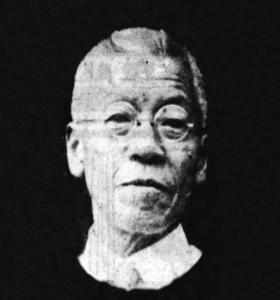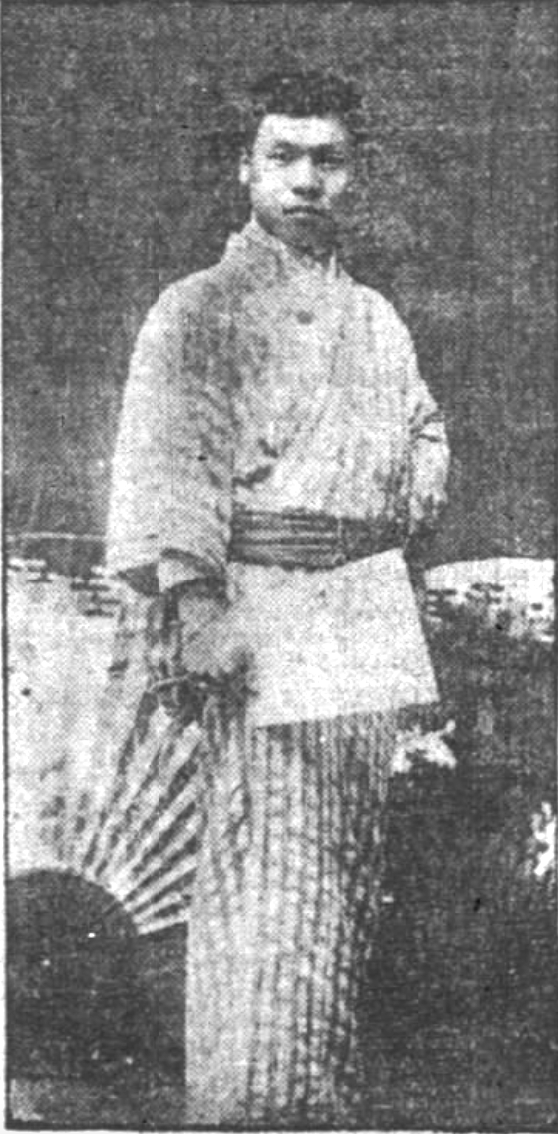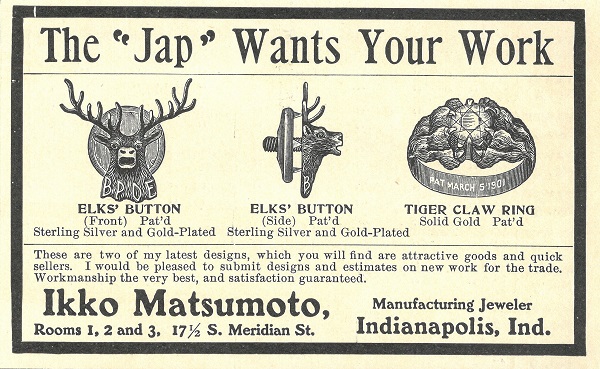
Photo info ...
Credit: IndyStarView Source
(Sept. 14, 1863-Dec. 14, 1935). Ikko Yahe was born in Tokyo, Japan, where he apprenticed with his uncle from ages 12 to 21 to learn how to design and manufacture jewelry. Following Japanese custom, Yahe took the surname of the man from whom he learned his trade, in this case his uncle’s surname, Matsumoto. He came to the United States in 1887, living in San Francisco, Chicago, and Boston, before moving to Indianapolis in 1892 with his wife Frances Piper Post, whom he met and married in Boston in 1890.

In Indianapolis, Matsumoto joined jeweler George G. Dyer to co-operate a jewelry manufacturing business on the southwest quadrant of Circle Drive (now ) in the Sentinel Building. Dyer’s talent as a jeweler and engraver meshed with Matsumoto’s as a designer and manufacturer. Both men specialized in watch repair and jewelry, however, they became known for manufacturing gold and silver novelties such as spoons, class rings, fraternity pins, and badges. The Dyer-Matsumoto partnership dissolved in April 1896.
That year Matsumoto applied for U.S. citizenship. Four years later, Matsumoto’s petition for naturalization was denied. Though Japanese, the denial stemmed from then-citizenship laws that prohibited Chinese nationals from becoming citizens. According to the , Matsumoto identified as a naturalized citizen in February 1900.
By 1901, he had earned recognition for the sterling silver and gold-plated jewelry he produced for the and other fraternal organizations in Indianapolis. The Benevolent and Protective Order of the Elks (BPOE) commissioned him to produce pins and rings, designs for which Matsumoto filed and received patent protection on February 26, 1901.
Indianapolis tea merchant Moy Kee commissioned Matsumoto to design a gold badge for the in 1904. Matsumoto designed a solid gold badge in the shape of an American flag. He carved a Chinese dragon into the gold, placing a two-karat diamond in the dragon’s mouth and rubies in its eyes.

The exhibited Japanese tapestries and cloisonne enamel vases in 1911. Matsumoto created step-by-step models illustrating the cloisonne enamel process. The following year jurists selected him for the fifth annual retrospective of Indiana Artists at Herron. Notable artists such as , , , , and were among those included in the exhibition.
By 1930, Matsumoto fully established himself as a master craftsman, watchmaker, and engraver to Indianapolis’ most noted families. His clients included such individuals as Indianapolis Democratic Party leader , journalist and politician , and President widow Mary Scott Lord. Matsumoto received one of his biggest commissions from co-founder . Matsumoto created an expansive copper mantel and animal-inspired relief tiles for several rooms in his 200-foot yacht, Shadow K, in Miami, Florida.

Help improve this entry
Contribute information, offer corrections, suggest images.
You can also recommend new entries related to this topic.